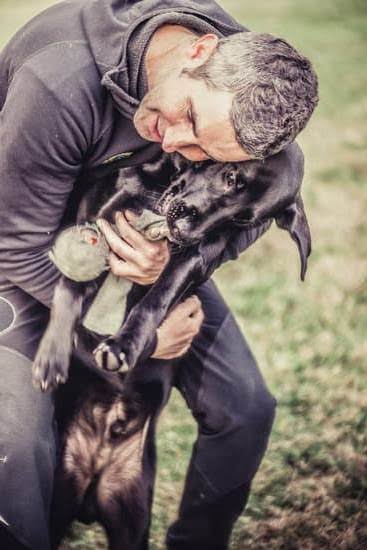Are you looking to improve your furry friend’s obedience and behavior? Enrolling your dog in a training school can be a rewarding experience for both you and your pet. Training schools offer structured programs that help address common behavior issues, enhance communication, and strengthen the bond between owners and their dogs.
At a dog training school, professional trainers provide expert guidance on teaching commands, leash manners, socialization skills, and more. This structured environment can help address specific behavioral problems such as barking, jumping, or pulling on the leash. Additionally, training schools provide a safe space for dogs to interact with other animals in a controlled setting, promoting socialization and overall well-being.
Choosing the right dog training school is crucial for ensuring that your pet receives quality instruction and care. Consider factors like the trainer’s qualifications, class sizes, facility cleanliness, and training methods before making a decision. By investing time and effort into finding the best fit for your dog’s needs, you can set them up for success in their training journey.
Understanding the Importance of Proper Dog Training
Proper dog training is essential for the well-being and happiness of both your pet and yourself. It not only helps in shaping your dog’s behavior but also establishes a strong bond between you and your furry friend. Training provides mental stimulation to keep your dog engaged, prevents destructive behavior, enhances communication, and creates a sense of trust and respect between you and your pet.
Enrolling your dog in a professional dog training school can offer structured lessons that address various aspects of obedience training, socialization, and problem-solving. These schools are staffed with experienced trainers who understand canine behavior and use positive reinforcement techniques to teach desired behaviors. A structured curriculum ensures that your dog receives consistent training, which is key to achieving long-term results.
The benefits of proper training extend beyond just obedience commands; it also helps in addressing common behavior issues such as aggression, separation anxiety, barking, and more. By providing your dog with the necessary skills to behave appropriately in different situations, you can enhance their quality of life while also making them a joy to be around for both family members and strangers alike.
| Benefits of Dog Training | Details |
|---|---|
| Mental Stimulation | Keeps dogs engaged and prevents boredom. |
| Prevention of Destructive Behavior | Helps in curbing unwanted behaviors like chewing or digging. |
| Enhanced Communication | Allows for better understanding between owner and pet. |
Choosing the Right Dog Training School for Your Pet
When it comes to choosing the right dog training school for your pet, there are several factors to consider to ensure that you make the best decision for your furry friend. One of the first things to look for is accreditation and certification of the school.
A reputable dog training school will have certified trainers who have undergone proper education and training in canine behavior and training techniques. This will give you peace of mind knowing that your dog is in good hands.
Another important aspect to consider when choosing a dog training school is the training methods used. It’s crucial to find a school that uses positive reinforcement techniques rather than harsh punishment or dominance-based methods. Positive reinforcement has been proven to be effective in shaping desired behaviors in dogs without causing stress or fear. Look for a school that focuses on building a strong bond between you and your pet through trust and respect.
Additionally, consider the class size and curriculum offered by the dog training school. Classes should be small enough to allow for individual attention from the trainer and tailored to meet the specific needs and goals of you and your dog.
A well-rounded curriculum should cover basic obedience commands, socialization skills, as well as addressing any behavior issues or concerns you may have. By choosing a reputable dog training school with certified trainers, positive reinforcement methods, small class sizes, and a comprehensive curriculum, you can set your pet up for success in their training journey.
| Factors to Consider | Importance |
|---|---|
| Accreditation & Certification | Ensures trained professionals are handling your pet |
| Positive Reinforcement Techniques | Promotes healthy bond building without stress |
| Class Size & Curriculum | Individual attention & comprehensive learning experience |
A Day in the Life of a Dog at Training School
Morning Exercises
At a dog training school, a typical day for your furry friend starts with some morning exercises. These exercises are not only important for physical health but also for mental stimulation. Dogs engage in activities like fetching, running, and obstacle courses to keep them active and alert. This helps improve their focus and obedience throughout the day.
Interactive Learning Sessions
After the morning exercises, dogs at training school participate in interactive learning sessions with professional trainers. These sessions involve teaching basic commands such as sit, stay, and come, as well as more advanced tricks depending on the level of the class. The focus is on positive reinforcement techniques to encourage good behavior and learning in a fun environment.
Socialization Time
Another crucial part of a day at dog training school is socialization time. Dogs get the opportunity to interact with other dogs in a controlled setting under the supervision of trainers. This helps them learn how to behave properly around other animals and people, reducing any anxiety or aggression they may have towards new situations. Socialization is key to a well-rounded and well-behaved pet both at school and out in the world.
Common Behavior Issues Addressed in Dog Training School
When it comes to enrolling your beloved pet in a dog training school, one of the main benefits is addressing common behavior issues that may arise. These schools have experienced trainers who can help tackle problems such as excessive barking, jumping on people, aggression towards other animals or humans, and even separation anxiety. By identifying these behavior issues early on and providing the right training techniques, a dog training school can effectively modify your pet’s behavior for the better.
Here are some of the common behavior issues that are typically addressed in a dog training school:
- Leash pulling
- Housebreaking
- Destructive chewing
- Excessive barking
- Aggression
These issues can often be frustrating for pet owners to handle on their own. However, with the expertise of trainers at a dog training school, you can work together to overcome these challenges and improve your dog’s overall behavior.
In addition to correcting these unwanted behaviors, dog training schools also focus on teaching obedience commands such as sit, stay, come, and heel. By reinforcing these commands consistently during training sessions, your furry friend will not only become more well-behaved but also develop a stronger bond with you as their owner. With patience and dedication from both you and the trainers at the dog training school, your pet can learn to become a well-mannered companion in no time.
Tips for Reinforcing Training at Home
Proper training is essential for your furry friend’s well-being and integration into your household. While enrolling your dog in a dog training school can provide them with the necessary skills and behaviors, it is equally important to reinforce these lessons at home. Here are some tips on how you can effectively continue the training process beyond the classroom:
- Consistency is key: Dogs thrive on routine and structure, so make sure to maintain consistency in your commands, rewards, and expectations. This helps reinforce their learning and prevents confusion.
- Practice makes perfect: Just like any skill, practice is essential for your dog to master their training. Set aside time each day to work on obedience commands, tricks, or behavior modifications.
- Use positive reinforcement: Rewarding good behavior with treats, praise, or playtime encourages your dog to continue exhibiting that behavior. This positive reinforcement motivates them to follow commands willingly.
In addition to these tips, it’s important to create a conducive environment for training at home. Minimize distractions, choose a quiet space free from noise or other pets, and ensure you have the right training tools such as treats or clickers on hand.
By incorporating training into your daily routine and establishing clear communication with your pet, you can enhance their skills and strengthen the bond between you both. Remember that patience, persistence, and love are key ingredients in successful at-home training sessions.
With dedication and commitment to reinforcing what they’ve learned at a dog training school through continued practice at home, you’ll soon see the progress in your furry companion’s behavior. Together, you can build a strong foundation of trust and understanding that will benefit both of you for years to come.
Success Stories From Graduates of the Dog Training School
Enrolling your dog in a training school can have numerous benefits for both you and your furry companion. One of the key advantages is that it provides structured learning opportunities for your dog to develop essential skills and behaviors. A dog training school can help address common behavior issues, improve obedience, and enhance socialization with other dogs and people. Additionally, the experience at a training school can also boost your dog’s confidence and overall well-being.
At a dog training school, professional trainers play a crucial role in guiding and shaping your pet’s behavior. Their expertise and experience enable them to identify specific training needs and create personalized plans to address them effectively. Through positive reinforcement techniques, trainers can instill good habits and eliminate undesirable behaviors in a safe and supportive environment. As a result, graduates of a reputable dog training school often exhibit improved obedience, better manners, and increased responsiveness to commands.
Success stories from graduates of a dog training school highlight the transformative impact that proper education can have on a canine companion. Dogs who have completed training programs often demonstrate increased obedience, enhanced communication with their owners, and better integration into various social settings.
The success stories serve as testaments to the effectiveness of investing time and effort into professional dog training. By sharing these experiences, pet owners can inspire others to consider enrolling their dogs in reputable training schools to achieve similar positive outcomes.
The Role of Professional Trainers in Shaping Your Dog’s Behavior
Professional trainers play a crucial role in shaping the behavior of dogs enrolled in a training school. These trainers are specially trained to understand canine behavior, communication, and learning techniques. By working closely with professional trainers, pet owners can ensure that their dogs receive the personalized attention and guidance needed to address behavioral issues effectively.
Expert Guidance and Support
Professional trainers at a dog training school have the knowledge and experience to recognize the underlying causes of certain behaviors exhibited by dogs. They can provide expert guidance on how to modify these behaviors using positive reinforcement techniques. Through consistent training sessions and individualized approaches, trainers can help dogs overcome challenges and develop good habits.
Customized Training Plans
Each dog is unique, with its own personality traits and learning styles. Professional trainers create customized training plans tailored to the specific needs of each dog. Whether it’s basic obedience training, socialization skills, or addressing specific behavior problems, trainers design structured programs that cater to the individual requirements of every canine student.
Continuous Evaluation and Progress Monitoring
Another essential aspect of professional trainers is their ability to continuously evaluate a dog’s progress throughout the training process. They monitor behavioral improvements, adjust training methods as necessary, and provide feedback to pet owners on how they can reinforce training at home. This ongoing support ensures that dogs at a training school receive consistent guidance towards becoming well-behaved companions.
How Dog Training School Can Strengthen the Bond Between You and Your Pet
Enrolling your dog in a training school can be a rewarding experience for both you and your furry friend. Not only does proper training help address behavior issues and create a well-behaved pet, but it also strengthens the bond between you and your dog. By working together towards common goals and learning to communicate effectively, the training process can deepen the connection you share with your canine companion.
At a dog training school, professional trainers play a crucial role in guiding both you and your pet through the learning process. Their expertise and knowledge help create a positive and productive environment where your dog can thrive. Through their guidance, trainers not only teach commands and techniques but also provide valuable insights into understanding your dog’s behavior and motivations. This level of support and encouragement can significantly enhance the training experience for both you and your pet.
The success stories from graduates of a dog training school serve as testament to the impact of proper training on the relationship between dogs and their owners. These stories highlight not only the transformation in behavior that occurs but also the sense of accomplishment and pride that comes with overcoming challenges together.
By investing time and effort in enrolling your pet in a reputable dog training school, you are not just shaping their behavior, but also nurturing a stronger bond based on trust, respect, and mutual understanding.
Frequently Asked Questions
How Do I Become a Dog Trainer in Nebraska?
Becoming a dog trainer in Nebraska typically involves gaining experience working with dogs, whether through volunteering at shelters or assisting established trainers. While formal education is not always required, obtaining certifications from organizations like the Certification Council for Professional Dog Trainers can enhance credibility.
How Do I Become a Dog Trainer in MD?
To become a dog trainer in Maryland, aspiring professionals can pursue various paths. This may involve apprenticing with experienced trainers, taking courses on canine behavior and training methods, and obtaining certifications. Building a solid understanding of dog psychology and training techniques is essential for success in this field.
How Long Does It Take to Become a Dog Trainer in Texas?
The time it takes to become a dog trainer in Texas varies depending on the individual’s pace of learning and dedication to the craft. Some aspiring trainers may complete certification programs in several months, while others may take longer to acquire the necessary knowledge and skills. Engaging in hands-on training experiences can also expedite the learning process.

Welcome to the blog! I am a professional dog trainer and have been working with dogs for many years. In this blog, I will be discussing various topics related to dog training, including tips, tricks, and advice. I hope you find this information helpful and informative. Thanks for reading!





